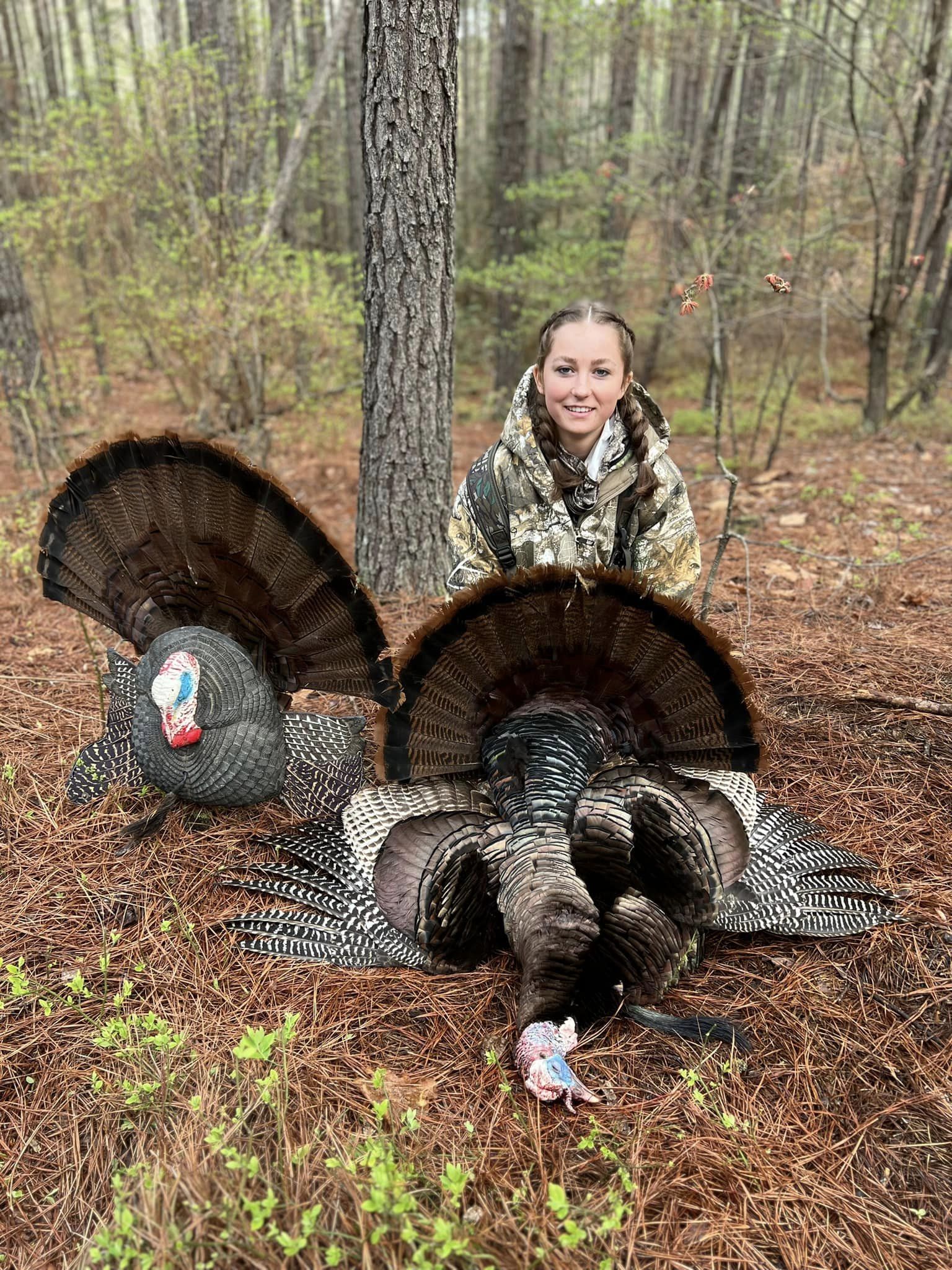Many Virginia hunters enjoyed the record-setting spring gobbler harvest that occurred in the spring of 2023. According to Virginia Department of Wildlife Resources (DWR) statistics there were 24,447 turkeys harvested during the 2023 spring turkey season – the highest spring turkey harvest ever recorded in Virginia! The previous record was 20,580 set during the 2015 spring hunting season. Ryan Brown, DWR Executive Director, stated “Turkey populations remain healthy and abundant across most of Virginia, enabling hunters to enjoy a record-setting spring turkey season.”
Now, where does that leave us for spring 2024?
Mike Dye, DWR upland game bird biologist, is optimistic but not predicting another record harvest.
“I’m not anticipating a stellar year like the 2023 season,” he said. “But there will be patches of good action. Several areas of the state are showing positive trends including the Shenandoah Valley and much of the eastern part of the state. Areas like the Northern Neck and the Northern Neck and the Southeastern counties, such as Southampton, Surry, and Sussex counties, will probably be a bright spot.”
DWR biologists cite the above average poult per hen (PPH) ratio of 2.7 in 2021 for the record harvest numbers. Two-year-old male turkeys typically make up the majority of any season’s harvest, and the 2021 PPH was certainly a major factor in hunters doing so well the season before. The Toms from that year class will be in their third year this spring, and Dye confirms that a larger than normal contingent of that age group will be strutting.
The optimism comes amid some not so good PPH rations in 2022 and 2023 – 1.9 and 1.8 respectively and below average ratios.
Dye noted much of the decline in numbers was due to the excessive rain in May that affected turkey nesting and rearing.
“Last spring, the Southwestern Mountain area took a bad hit because there was a lot of rain in May, which is bad for brooding,” said Dye. “Early on, broods aren’t able to thermoregulate, so cold and rainy conditions can be bad for recruitment. However, the drought in the Shenandoah Valley and Northern Piedmont helped boost broods in those areas, which should improve bird numbers in future years.”
Additionally, continues the biologist, the northern mountain areas of the state have endured “hit and miss” reproduction in recent years. Many of these counties host large expanses of national forest and DWR Wildlife Management Areas (WMAs). Counties with stable weather and where public lands have experienced active forestry management projects that let sunlight hit the forest floor will likely supply better action than areas that have not enjoyed the benefits of habitat improvements.
Hunters that note such things will remember this season will mark the third year of the last three weeks of the season offering all-day hunting. Dye relates that the extra time hasn’t had a significant effect on the overall harvest. Only 7.2 of the total harvest occurred during those afternoon hours in 2023.
DWR biologists anticipated the spring turkey harvest would increase during the 2023 season as indicated by above average brood survey results in 2021. The Department’s annual brood survey is a measure of productivity and recruitment within Virginia’s turkey population.
In 2021, the survey indicated above average recruitment of turkey poults across much of the state. These birds are now two years old and two-year old gobblers are typically very eager to respond to hunter’s calls. In addition to the increased availability of responsive gobblers, hunters will hope for favorable weather that can contribute greatly to success for many Virginia turkey hunters. If temperatures remain relatively cool and dry hunters will enjoy ideal hunting weather.
Looking back again at last spring gobbler season, as in previous years, more birds were harvested east of the Blue Ridge (68%) than west of the Blue Ridge (32%). Adult gobblers (those with a beard at least 7” in length) made up 92% of the total harvest, while juvenile gobblers known as “Jakes” (those with a beard less than 7” in length) accounted for only 8% of the harvest. Tukey harvests occurred overwhelmingly in the morning (93%) versus the afternoon (7%).
According to game check data the majority of the spring turkey harvest took place on private lands (93%). Public land hunters (both federal and state) accounted for 7% of the total spring harvest, which was an increase from the prior two years. National Forest lands accounted for the majority of public land harvests.
Although many states within the region are reporting declining spring turkey harvests and populations, Virginia seems to be a bright spot regionally. Four of the top five turkey harvests have occurred since 2020, indicating that populations appear to be robust.
Virginia’s spring turkey season kicks off on April 6-7, 2024, with Youth & Apprentice Spring Turkey Hunting Weekend, and spring turkey season runs from April 13 to May 18, 2024.
Editor’s Note: Elements of this article appeared in a piece done by Bruce Ingram for the DWR.



